Barrett MRAD SMR .300 Weatherby Mag Bolt Action Rifle, 26" Barrel, Black – 18511 For Sale
$4,385.99
The Barrett MRAD SMR .300 Weatherby Mag Bolt Action Rifle is renowned for its exceptional precision and modularity, making it a top choice for both range enthusiasts and professional duties. Featuring a robust 26″ barrel and crafted from durable 7000-series aluminum, this rifle includes a monolithic upper receiver with a full-length M1913 Picatinny top rail designed for enhanced long-range accuracy. Retaining the original MRAD’s impressive .75 MOA accuracy, the SMR streamlines the design by focusing on a single caliber and eliminating the interchangeable barrel system and folding stock, which contributes to its sleeker profile. With a 90 percent parts commonality with its predecessor and weighing 2.5 lbs less, it offers a lightweight yet powerful solution for precision shooting in diverse settings.
What is the difference between the Barrett MRAD and SMR?
The Barrett MRAD (Multi-Role Adaptive Design) and the SMR (Single Mission Rifle) are both precision rifles developed by Barrett Firearms, but they have distinct differences:
1. **Design Purpose**:
– **MRAD**: Designed for versatility and adaptability in multiple roles and missions. It features a modular design allowing quick conversion between different calibers and configurations.
– **SMR**: Designed as a more mission-specific sniper rifle with a fixed design tailored for dedicated long-range precision.
2. **Caliber and Barrel Swapping**:
– **MRAD**: Known for its easily swappable barrels, allowing users to change calibers in the field quickly without specialized tools.
– **SMR**: Typically comes in a fixed caliber without the modularity present in the MRAD, focusing on simplicity and single-caliber setup.
3. **Modularity**:
– **MRAD**: Highly modular, making it suitable for a wide range of scenarios by configuring it for different calibers, barrel lengths, and other accessories.
– **SMR**: Less modular and more streamlined for specific missions, limiting changes to its setup.
4. **Use Case and Flexibility**:
– **MRAD**: Suitable for military and law enforcement operations requiring flexibility due to its adaptable configurations.
– **SMR**: Ideal for scenarios where the rifle can remain in one setup, for dedicated sniper use with less need for frequent caliber changes.
In summary, the Barrett MRAD offers high adaptability with its modular system, whereas the SMR is a more fixed, purpose-driven rifle for specific long-range applications.
Can civilians buy Barrett MRAD?
Yes, civilians can purchase the Barrett MRAD (Multi-Role Adaptive Design) rifle in the United States, provided they comply with federal, state, and local laws regarding firearm ownership. It is important for buyers to go through the appropriate background checks and purchase the firearm through authorized dealers. Additionally, some states may have specific restrictions on certain types of firearms, so potential buyers should verify the regulations applicable in their area.
Is Barrett MRAD worth it?
The Barrett MRAD (Multi-Role Adaptive Design) is considered worth it by many users, particularly those who value versatility, modularity, and long-range precision. It features a robust design, the ability to switch calibers easily, and excellent accuracy, making it a top choice for military and long-range shooting enthusiasts. However, its high cost may not make it suitable for everyone. Ultimately, whether it’s worth it depends on your specific needs, budget, and intended use.
What is an SMR rifle?
An SMR rifle typically refers to a “Soviet Military Rifle,” which can relate to a few different models of firearms used by Soviet and post-Soviet forces. Commonly, this might pertain to the widely recognized AK-47 or AK-74 series, known for their reliability and use by military forces around the world. However, an SMR could also denote other specific rifle models depending on the context, such as a civilian designation or a different nomenclature used in various regions. If you have a specific rifle in mind, more detailed information could be provided.
Does US military use MRAD?
Yes, the US military uses the MRAD (M2010 Enhanced Sniper Rifle) for long-range precision shooting. The MRAD, designed by Barrett, is a modular, multi-caliber sniper rifle that has been adopted by various branches of the US military for its adaptability and precision.
What are the advantages of MRAD?
MRAD, or Milliradian, is a unit of angular measurement commonly used in optics and firearms, especially for ranging and adjusting rifle scopes. Here are some advantages of using MRAD:
1. **Precision**: MRAD provides fine adjustments, allowing for precise targeting and calibration of firearms.
2. **Universal Metric System**: Being based on the metric system, MRAD is consistent with most scientific and geographical calculations, which simplifies conversion and use globally.
3. **Proportional Scaling**: It allows for easy scaling of measurements, making it simpler for shooters to make adjustments based on target distance. One MRAD equals 10 cm at 100 meters, which can be easily calculated at various ranges.
4. **Widespread Adoption**: Many military and law enforcement agencies around the world use MRAD, making it a standard choice for tactical and professional applications.
5. **Efficiency in Adjustments**: Adjusting for windage and elevation is often more straightforward with MRAD due to its simple mathematical relationships and less room for error when calculating in the field.
6. **Compatibility with Modern Optics**: Many modern rifle scopes are designed with MRAD adjustments in mind, providing better compatibility and performance with current technologies.
These advantages make MRAD a preferred choice for many shooting and tactical applications.
Why is 50 BMG illegal?
The legality of .50 BMG (Browning Machine Gun) ammunition varies by jurisdiction. It is not universally illegal, but some places have restrictions or outright bans due to its high power, long range, and potential for misuse. Lawmakers in certain areas view it as a potential threat to public safety, particularly regarding its ability to penetrate armored targets and other barriers. Check specific local, state, or national laws for precise regulations in your area, as they can vary significantly.
How accurate is the Barrett Mrad?
The Barrett MRAD (Multi-Role Adaptive Design) is known for its high accuracy and precision, particularly among long-range sniper rifles. Users and experts frequently report sub-MOA (minute of angle) accuracy, meaning it can consistently hit within about one inch at 100 yards, given proper conditions and a skilled shooter. Its modular design allows for outstanding consistency across various calibers, further enhancing its reputation for accuracy. However, actual performance can vary based on factors like ammunition quality, environmental conditions, and the user’s expertise.
Who uses Barrett Mrad?
Barrett MRAD (Multi-Role Adaptive Design) rifles are typically used by military and law enforcement professionals, as well as civilian long-range shooting enthusiasts. The rifle’s modular design allows it to be adapted for various calibers, making it popular among those who require versatility and precision in different shooting scenarios.
Is 300 PRC better than 338 Lapua?
The comparison between the 300 PRC (Precision Rifle Cartridge) and the 338 Lapua Magnum involves evaluating several factors, including the intended use, ballistic performance, and personal preferences.
1. **Ballistic Performance**: The 338 Lapua Magnum typically offers superior long-range performance with higher energy, making it more suitable for extreme long-distance shooting and big game hunting. The 300 PRC, however, also provides excellent long-range accuracy with a flatter trajectory and is often praised for its efficient design and high ballistic coefficients, especially with modern high-BC bullets.
2. **Recoil**: The 300 PRC generally has less recoil than the 338 Lapua Magnum, making it more manageable for some shooters. This can be important in prolonged shooting sessions or for shooters more sensitive to recoil.
3. **Availability and Cost**: Both cartridges are less common than more traditional hunting cartridges like the .308 Winchester or .30-06 Springfield. However, the 338 Lapua Magnum is generally more expensive when it comes to ammunition and rifles, due to its specialized nature. The 300 PRC may offer a more cost-effective option for shooters looking for long-range capabilities.
4. **Intended Use**: Consider what you want to use the cartridge for. The 338 Lapua Magnum is typically reserved for military and extreme long-range applications, including heavy game hunting. The 300 PRC, while also viable for long-range shooting and big game, might be more suitable for those who don’t require the sheer power of the 338 Lapua.
Ultimately, whether the 300 PRC or the 338 Lapua Magnum is “better” depends on your specific needs, preferences, and the contexts in which you plan to use them.
What does MRAD stand for Barrett?
MRAD stands for “Multi-Role Adaptive Design” in the context of Barrett. It refers to a line of precision rifles designed for military and law enforcement use.
Are carbine rifles less accurate?
Carbine rifles are generally not inherently less accurate than their longer-barreled counterparts. However, several factors can influence the perceived accuracy of a carbine rifle:
1. **Barrel Length**: Carbine rifles typically have shorter barrels, which can result in a reduced muzzle velocity and potentially affect long-range accuracy. However, for many practical purposes, especially at shorter to mid-range distances, this difference is minimal.
2. **Handling**: The shorter, lighter design of a carbine makes it easier to handle and maneuver, particularly in close quarters, which can enhance practical accuracy in certain scenarios.
3. **Ballistics**: The effectiveness and accuracy at longer distances can be reduced due to the lower velocity, which affects the bullet’s trajectory and stability.
4. **Sights and Optics**: Carbines may have different sighting systems compared to rifles with longer barrels, which can affect precision. The quality of optics and the user’s familiarity with them play a critical role in accuracy.
5. **Intended Use**: Carbines are often designed for situations where portability and ease of use are more important than maximum range accuracy, like urban settings or for use by cavalry. When used within their optimal range, carbines can be very accurate.
Ultimately, accuracy can vary depending on the specific model, environmental conditions, and the skill of the user.
What is the difference between SMR and traditional nuclear reactors?
The primary differences between Small Modular Reactors (SMRs) and traditional nuclear reactors are related to size, design, construction, economics, and flexibility. Here’s a detailed comparison:
1. **Size**:
– **SMRs**: As their name suggests, SMRs are smaller in size and have a lower power output, generally under 300 megawatts per unit.
– **Traditional Reactors**: These are larger, with power outputs usually exceeding 1,000 megawatts per unit.
2. **Design and Construction**:
– **SMRs**: SMRs are designed to be modular, meaning they can be manufactured in a factory setting and then transported to the site for assembly, potentially reducing construction time and costs. Their modular nature allows for scalability by adding more units as needed.
– **Traditional Reactors**: Typically, these require on-site construction, which can be time-consuming and expensive due to their size and complexity.
3. **Economics**:
– **SMRs**: Although they have a higher per-megawatt cost compared to larger plants, the reduced initial capital investment and potential for faster deployment can make them economical for specific applications and smaller markets.
– **Traditional Reactors**: Benefit from economies of scale, which can result in lower costs per megawatt over time, but require significant upfront investment and long construction periods.
4. **Safety**:
– **SMRs**: Typically incorporate advanced safety features, such as passive safety systems that rely on natural forces like gravity, convection, and resistance to high temperatures. Their smaller size can also reduce the potential impact of an accident.
– **Traditional Reactors**: While modern designs have improved safety measures, older reactors might not have these advanced features and rely more on active safety systems.
5. **Flexibility and Applications**:
– **SMRs**: Offer greater flexibility in terms of location and application. They are well-suited for remote locations, smaller grids, or as replacements for outdated fossil fuel plants. They can also be used in desalination or district heating.
– **Traditional Reactors**: Best suited for large, centralized power generation in areas with substantial infrastructure and grid capacity.
6. **Regulation and Deployment**:
– **SMRs**: Face different regulatory frameworks due to their novel designs. However, the modular and potentially faster deployment can help address dynamic energy demands and policy goals.
– **Traditional Reactors**: Well-established regulatory processes exist, though these can be lengthy, impacting deployment timelines.
These differences make SMRs an attractive alternative for certain markets and applications, complementing traditional reactors in the move towards cleaner energy.
Why is MRAD better than MOA?
The preference for MRAD (milliradian) over MOA (minute of angle) largely depends on personal preference, specific use cases, and regional standards, but here are some reasons why some people might consider MRAD to be better:
1. **Metric System Alignment**: MRAD is more consistent with the metric system, which is widely used globally. This makes it intuitive for shooters who are using metric measurements since 1 MRAD corresponds to 10 centimeters at 100 meters.
2. **Simplified Calculations**: Calculating adjustments can be simpler with MRAD because adjustments are often in multiples of 0.1 MRAD, which translates directly to easy-to-calculate figures in the metric system (e.g., 0.1 MRAD equals 1 cm at 100 meters).
3. **Fewer Adjustments**: Optics with MRAD adjustments typically require fewer clicks to make adjustments compared to MOA optics for the same change in point of impact. This can allow for faster corrections and easier tracking of changes.
4. **Standardization**: Military forces in many countries favor MRAD over MOA, making it a standard for tactical and long-range shooting. Users in the field or in training environments that follow military standards may find MRAD more common.
5. **Precision in Long-range Shooting**: In precise long-range shooting, the direct relation of MRAD with distance can make it easier to measure and make necessary windage and elevation adjustments without converting units.
While these points highlight why MRAD might be preferable for some, it’s important to note that both MRAD and MOA are effective systems, and many expert shooters use both depending on their specific needs and the equipment available. Personal preference and familiarity usually play a significant role in choosing between them.
What does the MRAD stand for?
MRAD stands for “Milliradian,” which is a unit of angular measurement commonly used in optics and ballistics.
Be the first to review “Barrett MRAD SMR .300 Weatherby Mag Bolt Action Rifle, 26" Barrel, Black – 18511” Cancel reply
Related products
Barrett MRAD SMR
Barrett MRAD SMR .338 Lapua Bolt Action Rifle Fixed Stock 26" Barrel, Tungsten Gray – 18504
Barrett MRAD SMR
Barrett MRAD SMR .300 Win Mag Bolt Action Rifle Fixed Stock 26" Barrel, Black – 18511
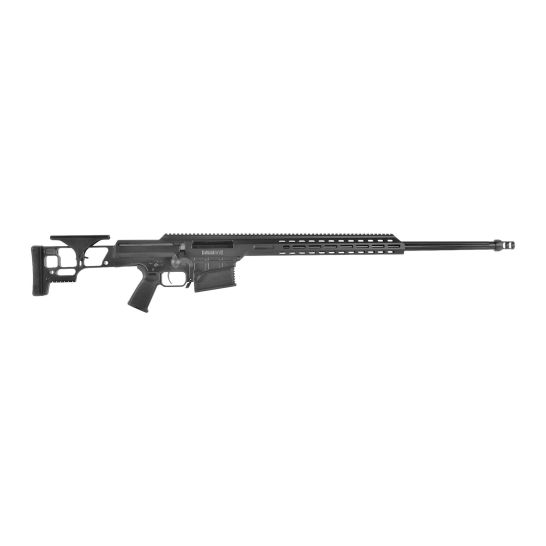
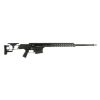
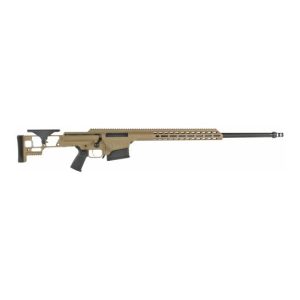
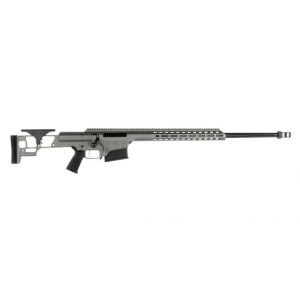
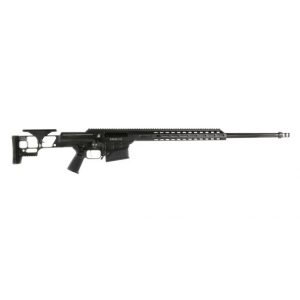
Reviews
There are no reviews yet.